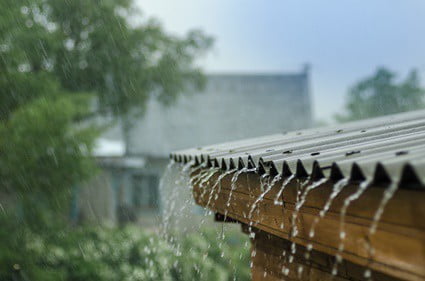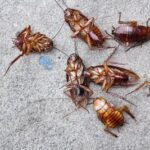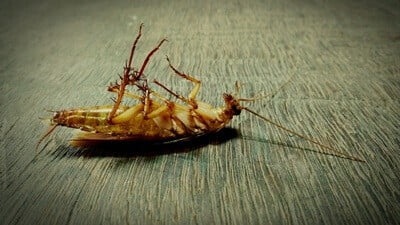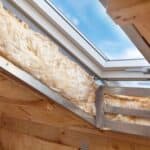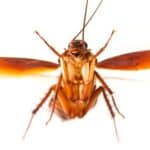Rain and humidity bring out different household pests. Many people have noticed that there are suddenly more roaches in their living space when it rains. If you’ve made this observation, you may be curious about the correlation between cockroaches and wet weather. Do cockroaches like rain, or is there something else at play?
Roaches do appear when it rains. Given that they can’t swim and may float away, a heavy downpour can destroy their nests and leave them stranded without food. To protect themselves, roaches seek safety indoors. Cockroaches also enjoy the humidity that comes with rain as it makes it easier for them to stay warm, find food, and drink.
Once inside your property, cockroaches will drink stagnant water, eat wet food, and find gaps in the foundations to build their nests. Roaches are far more active in warm or humid weather, which rain often creates. Roaches can even predict the weather in advance, causing them to spill out into your living environment before a storm arrives.
Does Rain Attract Roaches?
The rain repels cockroaches. A light downpour may be annoying to humans, but it can be devastating to insect populations. That’s because cockroaches:
- Are unable to properly swim.
- May get washed out of their shelter
- Get stuck in puddles, unable to escape
- Lose their scent trails and have to re-find food sources
- May be entirely displaced into a new area if the rain is heavy enough
As such, when it starts to rain, cockroaches seek a new, drier haven. If your home is nearby, that may include your living space. Your home is an attractive location due to:
- A cozy temperature
- Sources of food and water
- Dryness
That’s why it may seem like cockroaches are attracted to rain. They become more active during rainstorms, and you may find new roaches in your home. However, the rain hasn’t attracted them to your living space. It’s a byproduct of the rain driving them out from the wild.
Cockroaches In House After Rain
Aside from survival, you may find cockroaches lingering in your home after a rainstorm. Like a bad houseguest, the roaches will make their stay permanent. It’s not just because of the natural comforts of your home, but the rain itself. Even a light storm can leave behind:
Stagnant Puddles In or Around Your Home
Roaches need water to survive, just like any creature. However, because they’re not strong swimmers, most species of roaches don’t like moving water. The average household roach will seek out stagnant water.
After a rainstorm, there may be puddles gathered around your home’s foundation, or even inside your home. This is usually the case if you have a leak somewhere in your:
- Home’s skirting
- Roof
- Outdoor molding
- Walls
These puddles could remain for some time after the storm. Roaches from the outdoors will stay to take advantage of this safe water source. Any roaches in your home may also seek it out. With better access to water than before, the cockroach colony can then increase in population.
Water Damage To Your Walls or Foundation
During a rainstorm, there may also be heavy winds and flying debris. If your home sustains any damage, roaches may exploit the new cracks to gain entry.
For example, strong winds may have chipped your outside paneling. Likewise, repeat water damage may have seeped into your foundation, broadening any small gaps. This lets roaches sneak into your house and get access to your food.
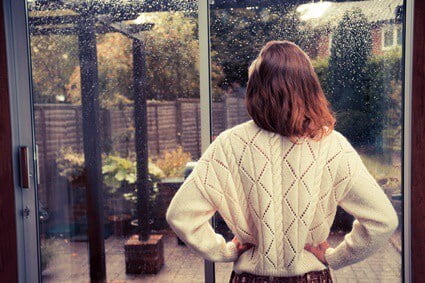
Will Wet Soil Or Leaf Matter Decay More?
Cockroaches eat decay. In the wild, they readily feed on leaves, feces, or corpses left by other creatures. During a rainstorm, any pet poop around your home or any blown leaves will get very wet. These materials will then sit and begin to decay.
This could attract roaches, which were already fleeing from the rain. With a food source at hand, they’ll stay around the exterior of your home. They may notice a gap in your window sills, doors, or skirting. If they do, they’ll enter.
Why Are There More Cockroaches After Rain?
Let’s assume your home isn’t affected by storm damage. Let’s also assume the rain wasn’t heavy, meaning nearby cockroaches shouldn’t have been disturbed. Why are you still seeing more cockroaches than before?
This could be because of the humidity. Depending on your climate, the temperatures may grow quite humid after rain. Cockroaches prefer warm weather over cold weather and are more active during these times. As such, in the muggy atmosphere after a rainstorm, you may find that cockroaches are more active. They’re more prone to:
- Flying
- Scavenging for food
- Breeding
You’ll find this is true for the new roaches, and any ones already inside your house.
New Roaches
Even during good weather, cockroaches still have a self-preservation instinct. They want to avoid being spotted by predators and, as such, won’t scuttle around without fear. However, you may still see more roaches because:
- More cockroaches will enter your home to escape the rain
- Humid weather to make them active
With the large number of roaches, not all of them are able to hide, so you can see them more easily.
Out of Hiding
For the roaches inside your home, you may have a bigger problem. They may be suddenly forced to share space with newcomers. This overpopulation will cause the numbers to spill out into your home.
Aside from that, warm weather is a reason for cockroaches to come out of hiding. They’re likely to find wet and decaying matter, such as leaves or dog feces. Stagnant water should be in abundance. The weather is ideal for their metabolism. They’ll naturally be more active.
So, if you’re feeling muggy and clouds are dark overhead, you might want to ready the bug spray. There’s a good chance that roaches will appear soon.
Why Cockroaches Appear Before It Rains
The aftermath of a rainstorm is only one aspect of your roach problem. You may find them coming out before the storm and during. Out of all the stages – before, during, and after – when are you most likely to see roaches?
Before
Roaches can detect an impressive range of things with their antennae. This includes pheromones and vibrations. However, perhaps the most impressive is a roach’s ability to predict the weather. Specifically, roaches can sense changes in barometric pressure.
They are aware that rainstorms are bad for their well-being. As such, you’ll find that they quickly seek out shelter with the air pressure changes. In fact, cockroaches can even tell how bad a rainstorm will be.
Cockroaches may not react if they can only sense a small drizzle incoming. The light sprinkles shouldn’t disrupt their habits or livelihood. However, if they sense a heavy storm, you can be sure that they’ll run for cover.
According to a report for the County of Santa Barbara, roaches can sense the impending rain up to an hour before it arrives. This was most prominently shown in Bermuda, where thousands of roaches fled through populated areas before the rain began. As such, you may notice roaches sneaking into your home once there’s a change in the air.
During
Once the rain has begun, roaches will certainly be eager to escape the water. However, they may be unable to. Depending on the intensity of the rain, cockroaches may be forced to bunker down wherever they can. Those that have entered your home may hole up.
If the rain is heavy, that becomes more true. The loud noise will encourage roaches to hold still and avoid predators. You won’t see as much activity during this time.
After
After the rain, the danger has passed, and cockroaches will wait for the water to dissipate. That can make it surprising when you suddenly find more roaches scurrying in your home.
Roaches now feel comfortable exploring their new home. They’re attracted by the still water sources, the wet (and easy to eat) food, and the lack of heavy sound. As such, it may seem like there are more cockroaches now than before. However, it’s just cockroaches that snuck in before now exploring their new terrain.
Does Rain Bring Out Cockroaches In Cities?
If you live near a forest and other rural areas, you may only deal with wild cockroaches. These creatures will flee their shelters in the wild to seek out better havens in your home.
That doesn’t explain city cockroaches, however, which should already have ample shelter during a storm. After all, they can hole up in drains and sewers, which are protected from the open sky. On the contrary, cockroaches are even more prone to fleeing into homes in the city. You may see cockroaches:
- Crawl out of shower drains
- Crawl up the plumbing to your sink
- Spill out of window AC units
- Skirt through little gaps in your doors or windows
That’s partly motivated by dangers unique to the city. When it rains, you’ll see that:
Sewers Flood
As water drains from the streets during a rainstorm, it may end up in the sewer. The water levels may rise, and the sewers could flood.
Most systems are designed to prevent a water back-up into homes or the streets. However, that won’t matter to a cockroach. Their previously well-balanced habitat will become swamped. In response, they’ll flee and locate safety.
This could be right out onto the streets or up through the pipes. Once outside, they’ll be eager to find a new home. This may include your apartment. They could gain access through your doors, window sills, or window AC units.
Drains Have More Water Flow
Even if a cockroach avoided the worst in the sewers, there’s still a large amount of water coming down the pipes. As the rain continues and the storm drains pass water down, cockroaches will be assailed by:
- Fast-moving water
- Loud noise
- Debris
This disturbance will naturally threaten their safety. In response, they’ll look to flee from the area. This may include going up pipes that are more docile, such as those leading to your bathroom. Depending on their options, it may also mean climbing up and out of storm drains themselves.
Do Cockroaches Like Rain?
As mentioned, cockroaches aren’t fond of rain. However, there are a few species that are more likely to invade your home after a rainfall. Specifically, these are the American cockroaches and Oriental cockroaches.
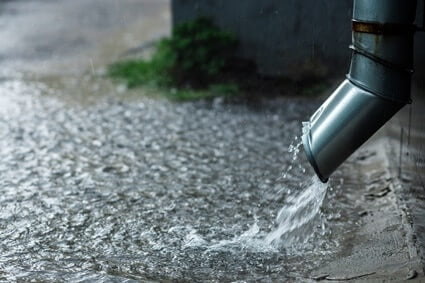
American Cockroaches
The American cockroach is one of the most common roaches to infest domestic homes. They like dark and humid areas with close access to food. However, American cockroaches are the most threatening during rain because of their outdoor habitat. They’re happy to live in your yard, tucking themselves in:
- Overgrown grass
- Piles of leaves
- Fallen branches
- Piles of wood
Once rain starts, they’ll seek a haven in the exterior of your home. This may include:
- Along your foundation
- In any overhang or lip at your front door
- In the molding along your windows
- In your house’s skirting
Once they’re nestled in these areas, it’s not difficult to find a way into your home. To avoid these creatures gaining a foothold, be sure to perform regular yard work. This will help drive them away from your house.
Oriental Cockroaches
Oriental cockroaches are the only species that actively seek out open water. This often earns them another name: “water bug.” They infest basements that have experienced flooding or swarm any standing water near your home.
They’ll be scared of rain like any cockroach and will quickly flee from a heavy downpour. They cannot swim or breathe underwater. However, they do make their homes near areas with standing water. Because of this, they’re the most likely to be affected by flooding. This includes:
- Storm drains
- Drainage pipes
- Sewers
- Ponds in your yard or nearby
Oriental cockroaches are less dexterous than other roach species. They cannot hold on to walls well or run fast. However, they are just as dangerous as any other roach species because of the diseases they carry.
While these roaches tend to stay near bathrooms, they will venture outdoors to forage for scraps. They’re more likely to spread diseases onto countertops, tables, and other surfaces when doing so.
How To Prevent Roaches When It Rains
While you can’t prevent rain from falling, you can prevent roaches from entering your home. Otherwise, cockroaches will spread germs and bacteria. Indeed, an article in the International Journal of Scientific Research determined that roaches can carry multiple types of:
- Bacteria
- Parasites
- Fungi strains
- Exotic viruses
It may feel hopeless to see so many roaches when it rains. However, you can use these methods to keep them at bay:
Install Water Traps
Water traps are used in plumbing to keep sewer gases from entering through your output pipes. Because they are important to your health, these traps are often required when installing toilets. Some modern sinks will also feature water traps.
In addition to their intended purpose, these traps are great at preventing roaches from entering a home. They create a bubble of water that halts objects or gases from backing up through the pipe while water is stagnant. This ensures cockroaches can’t float up into your toilet when it’s escaping the sewer. Since cockroaches aren’t good swimmers, they can’t circumvent this.
Use Shower And Sink Drain Covers
Drain covers are included with any modern sink or shower. However, older models do not always feature them, or yours may have been damaged. These drains can make it impossible for roaches to scuttle up your pipes and into your home. While they still may linger down the drain, they can’t gain entry. Eventually, they’ll leave.
Seal Entrances In Other Parts Of The House
According to the Proceedings of the National Academy of Sciences, roaches only need a gap of 3 mm. tall to fit. As such, you should check over your home for any gaps in the:
- Window sills
- Doorways
- Foundation
- Walls
- Roof
- Skirting
If you find any sign of water damage, be sure to apply repairs. This includes:
- Soft spots in the walls
- Deterioration in the molding or wood around your entry points
- Scuffs or cracks along your walls
Yard Work
As mentioned, cockroaches may seek a haven in your yard before finding their way into your home. Be sure to regularly clean away any:
- Leaf debris
- Wood piles
- Overgrown grass
- Stored items up against your home
By keeping roaches away from your house during dry periods, they’ll be further away during the rain season. This can motivate them to seek closer havens, which aren’t your home.
Traps And Bait
Of course, roaches are insidious creatures that may find their way into your home no matter what. If you notice an uptick in roaches when it rains, you can prepare traps around your home. These include:
- Poisoned bait
- Specific roach traps
- Barrier sprays of pesticide along the edges of your home
Using these methods, you can eradicate roaches that flee from the rain and into your living space. There’s no way to stop roaches from responding to rain. However, you can head them off before they become your problem.
